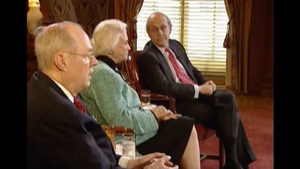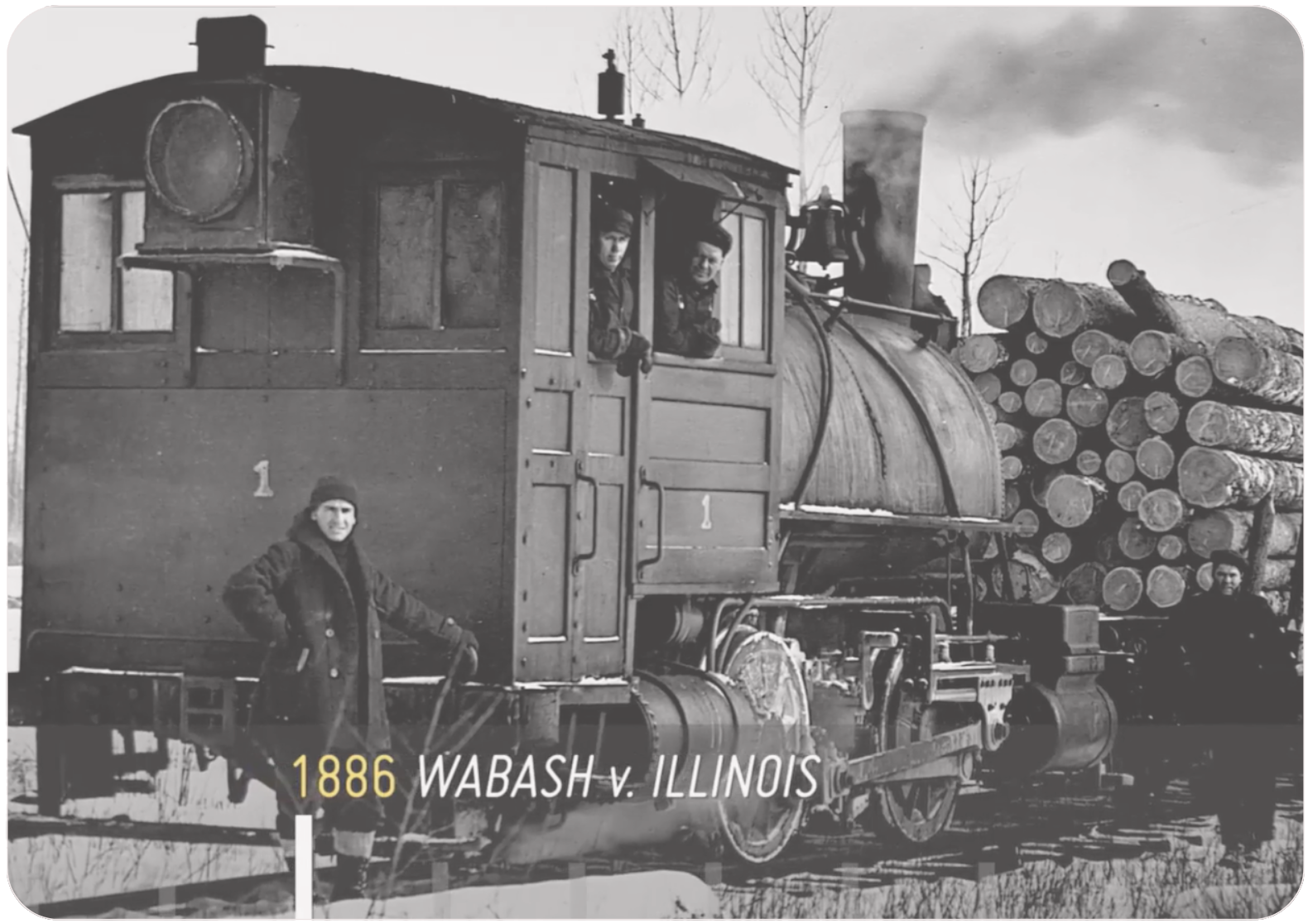How do we balance power between the states and the federal government? This question has shaped American democracy since the Constitutional Convention, when delegates faced the challenge of creating a stronger federal system while preserving state authority. This film explores the Constitution’s Commerce Clause found in Article 1, Section 8, which grants Congress the power “to regulate commerce…among the several states” and examines its historical context and ongoing impact.
What Are the Challenges to Judicial Independence?
This discussion guide is for use with the video “What Are the Challenges to Judicial Independence?” which features a lecture by Charles Geyh, professor at the Indiana University Maurer School of Law, at the Fair and Impartial Judiciary Symposium on October 26, 2019, at the University of Pennsylvania Law School.
Summary: Professor Geyh traces the development of the notion of judicial independence from the founding of our republic to the present. His discussion references how the sparse language of Article III of the U.S. Constitution has been amended over time by various conventions to promote the independence of a fair and impartial judiciary. He also examines how threats to such independence have arisen over time.
State vs. Federal Courts
This discussion guide is for use with the video “State vs. Federal Courts,” which features a conversation with the Hon. Renée Cohn Jubelirer of the Commonwealth Court of Pennsylvania, Robert Heim, Esq., and the Hon. Theodore McKee of the U.S. Court of Appeals for the Third Circuit. Lynn A. Marks, Esq., moderates the panel discussion, which took place at the Fair and Impartial Judiciary Symposium on October 26, 2019, at the University of Pennsylvania Law School.
Summary: Beginning with the Founders, the assumption has been that a fair and impartial judiciary requires judicial independence. Article III of the U.S. Constitution sought to ensure this independence through a system that provided for the appointment of judges who would serve during “good behavior” (i.e., life tenure). Initially, most of the states copied this system, but later many changed it, influenced by a different view of democracy developed during what is generally known as the Jacksonian era. The result: These states now provided for the popular election of judges based on fixed terms of service. In 1940, Missouri adopted a system that intended to take politics out of the process of choosing judges. Subsequently, this plan was adopted by many states. Learn more from a discussion about state and federal courts.
The Nature of Judicial Independence
This discussion guide is for use with the video “The Nature of Judicial Independence,” which features remarks and conversation with Justice Anthony Kennedy, the Hon. Stephanos Bibas, U.S. Court of Appeals for the Third Circuit, and David F. Levi, former dean of Duke University School of Law, on October 26, 2019, at the University of Pennsylvania Law School.
After Justice Anthony Kennedy retired in 2018, President Donald Trump was given his second appointment to the U.S. Supreme Court. This opening was widely seen as giving the president the chance to dramatically shift the balance of the U.S. Supreme Court to a more solid, conservative majority, even more so than the vacancy created by the death of Justice Antonin Scalia. Unlike Scalia, who was generally a reliable conservative vote, Kennedy had emerged as the “swing justice.” Indeed, Kennedy played a key role in some of the Supreme Court’s most recent controversial decisions, particularly those involving, among other matters, abortion, homosexuality, and prayer in public schools.
Is the Supreme Court Different?
This discussion guide is for use with the video “Is the Supreme Court Different?” which features a conversation with Linda Greenhouse, the Knight Distinguished Journalist in Residence and Joseph M. Goldstein Lecturer in Law at Yale Law School, who is interviewed by Theodore W. Ruger, dean of the University of Pennsylvania Law School, at the Fair and Impartial Judiciary Symposium on October 26, 2019, at the Penn Law School.
Summary: For many years, Linda Greenhouse was a New York Times reporter covering the U.S. Supreme Court. Her widely read and respected newspaper columns provided the nation with a clear view of the role the Court played in American society. Unlike many other courts, the public sessions of the Supreme Court are not televised, and not that long ago even the audio tapes of the oral arguments before the Court were not readily available.
How Do Judges Decide Cases?
This discussion guide is for use with the video “How Do Judges Decide Cases?” which features the Hon. Anthony J. Scirica of the U.S. Court of Appeals for the Third Circuit and Stephen Burbank, professor at the University of Pennsylvania Law School, at the Fair and Impartial Judiciary Symposium on October 26, 2019, at the University of Pennsylvania Law School.
Summary: Judge Anthony J. Scirica and Stephen Burbank regularly team up to teach a law school course on the judicial process. Their discussion at the symposium focuses on how judges arrive at decisions.
Deciding Difficult Cases
This discussion guide is for use with the video “Deciding Difficult Cases,” which features Jeffrey Rosen, president and CEO of the National Constitution Center, interviewing the Hon. Emmet G. Sullivan, U.S. District Court for the District of Columbia, at the Fair and Impartial Judiciary Symposium on October 26, 2019, at the University of Pennsylvania Law School.
Summary: Jeffrey Rosen and Judge Emmet G. Sullivan discuss the 2008 public corruption trial of longtime Republican Sen. Ted Stevens of Alaska. Stevens’ prosecution cost him reelection, and his defeat deprived the GOP of its narrow majority in the U.S. Senate at the time. Sullivan, who presided over the trial, chastised the prosecutors and the U.S. Justice Department, in general, for their mishandling of evidence and misconduct in the case. Sullivan’s role in these developments are a testament to the importance of judicial independence.
Fair and Impartial Judiciary Symposium
The Fair and Impartial Judiciary Symposium convened lawyers, scholars, judges and thought leaders at the University of Pennsylvania Law School to address the meaning and impact of an independent judiciary. The topics included the meaning of “fair and impartial judiciary”; the difference between state and federal courts; the challenges to judicial independence; deciding difficult cases; and the Supreme Court. Justice Anthony M. Kennedy gave the closing talk on “The Nature of Judicial Independence.” The symposium was organized by the Rendell Center for Civics and Civic Education in partnership with the Annenberg Public Policy Center of the University of Pennsylvania.
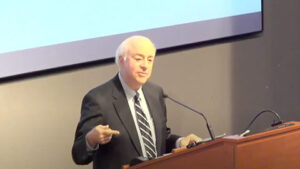
Mandate: The President and the People
The complex relationship between the presidency and public opinion is examined by leading historians, political scientists and public figures who also offer insight into the office and its occupants from George Washington to Franklin D. Roosevelt.
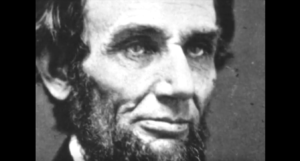
Article II – Treaty-Making Authority
Article II, Section 2, of the Constitution gives the president the power to make treaties with other countries, with the approval of two-thirds of the Senate.
A Conversation on the Constitution with Justice Stephen Breyer: The Nature of Dissent in the Supreme Court
Justice Stephen G. Breyer talks with high school students about the role and importance of dissenting opinions when the U.S. Supreme Court decides cases.
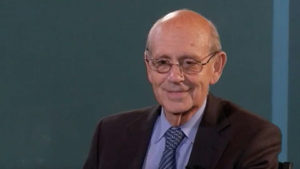
A Conversation on the Constitution with Chief Justice John Roberts Jr.: The Origin, Nature and Importance of the Supreme Court
Chief Justice John G. Roberts Jr. and a group of students discuss the U.S. Supreme Court: its history and evolution; how the justices select, hear and decide cases; and the role of an independent judiciary and other issues crucial to a healthy democracy today.
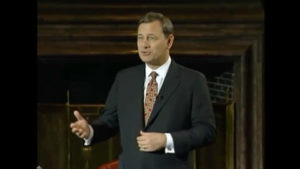
Article I
Article I creates the two sections of Congress – the Senate and the House – and outlines its powers and limits.
Article I – War Powers
The framers specified the powers of Congress in great detail in Article I, Section 8, of the Constitution. They include the power to declare war.
How a Bill Becomes a Federal Law
Through this lesson, students will learn about the dynamic process of federal lawmaking and how it relates to them.
Key Constitutional Concepts: Presidential Power
This lesson focuses on the landmark U.S. Supreme Court case Youngstown Sheet & Tube Co. v. Sawyer, which challenged the extent to which the president of the United States can exercise power during times of foreign conflict.
An Independent Judiciary: Cherokee Nation v. Georgia and Cooper v. Aaron
This lesson explores the role of the judiciary in relation to the legislative and executive branches and how judicial independence has evolved since the founding of the nation.
Judicial Independence: Essential, Limited, Controversial
In this lesson, students learn about the role of an independent judiciary in the United States. Through a cooperative learning jigsaw activity, they focus on operational differences, essential functions, limited powers, and controversial issues.
Actions That Changed the Law: Ledbetter v. Goodyear
This lesson tells the law-changing story behind the Lilly Ledbetter Fair Pay Act of 2009. Students gain insight into law-making process and consider how statutory decisions made by the U.S. Supreme Court can prompt better laws.
A Conversation on the Nature, Origin and Importance of the Supreme Court
This lesson explains the structure and function of the judicial branch. Students will learn how the Supreme Court originated, how cases are selected, and why it is an important institution.
One School’s Fight: The Making of a Law
Through this lesson, students will learn about the dynamic interconnections of people, principles, and process that are involved in making federal laws.
The Role of the Courts
In these five videos, judges explain separation of powers and the roles of the three branches of government as well as landmark cases related to separation of powers.
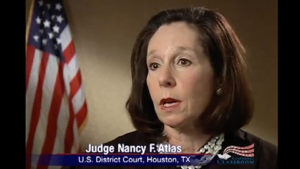
Key Constitutional Concepts
This three-part documentary discusses why and how the Constitution was created at the Constitutional Convention, explores the protection of individuals’ rights in Gideon v. Wainwright, and examines the limits of presidential power in Youngstown v. Sawyer.
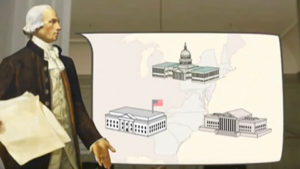
Habeas Corpus: The Guantanamo Cases
One of our oldest human rights, habeas corpus safeguards individual freedom by preventing unlawful or arbitrary imprisonment. This documentary examines habeas corpus and the separation of powers in the aftermath of the 9/11 attacks through four Guantanamo Bay cases: Hamdi v. Rumsfeld, Rasul v. Bush, Hamdan v. Rumsfeld and Boumediene v. Bush.
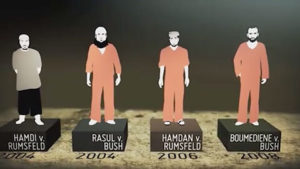
A Conversation on the Constitution with Justices Stephen Breyer, Anthony Kennedy and Sandra Day O’Connor: Judicial Independence
High school students join Justices Stephen G. Breyer, Anthony M. Kennedy and Sandra Day O’Connor to discuss why an independent judiciary is necessary.
